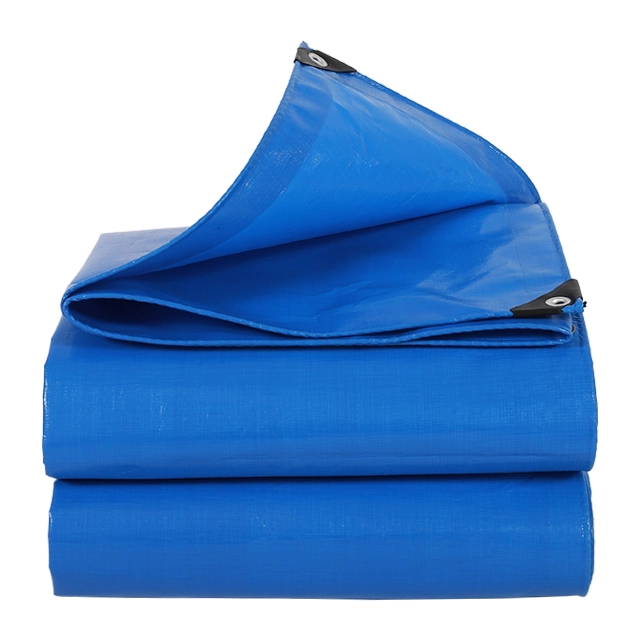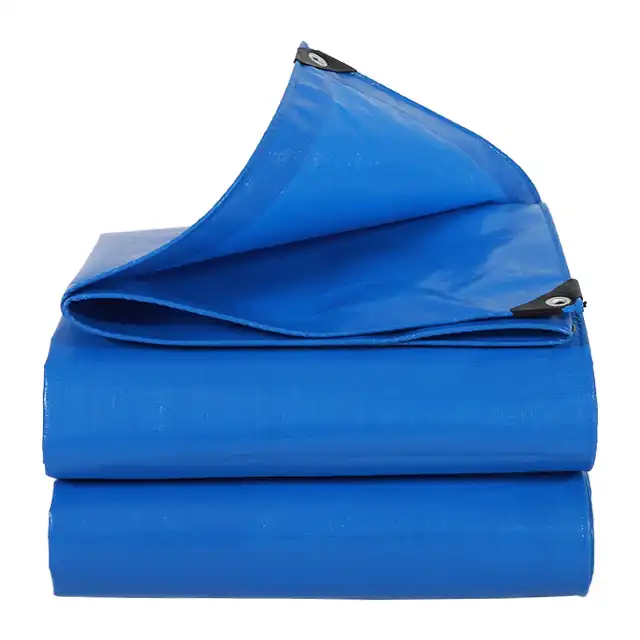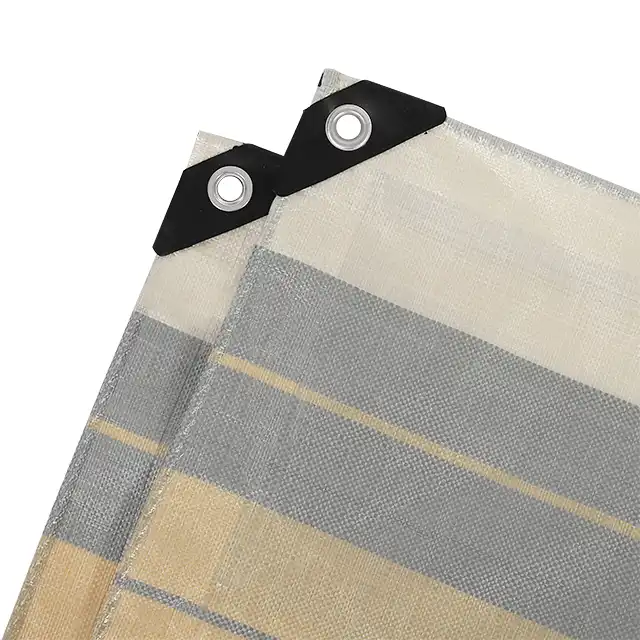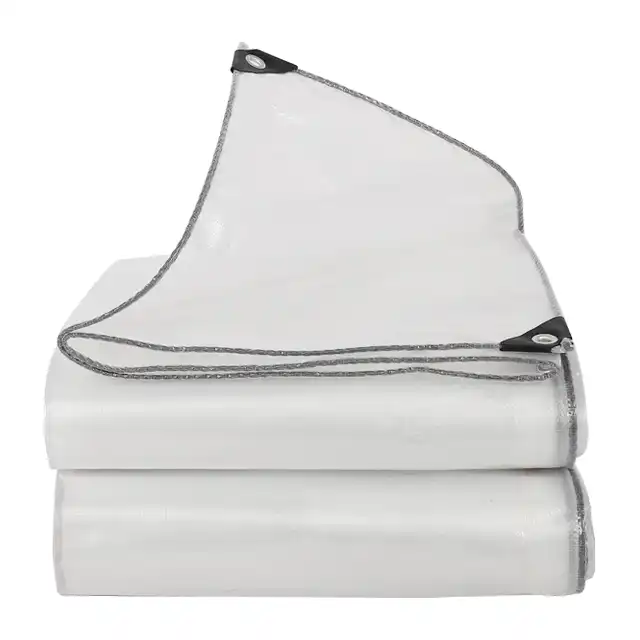Purple Tarp: A Comprehensive Guide |SENDOW TARPAULIN
Purple tarpaulins represent a unique blend of functionality and aesthetic appeal in the protective covering industry. This comprehensive guide explores the multifaceted world of purple tarpaulin solutions, examining their construction, applications, and advantages across various industries. Whether you're seeking weather protection for agricultural purposes, construction site coverage, or specialized industrial applications, understanding the characteristics and capabilities of purple tarpaulin products is essential for making informed purchasing decisions. SENDOW TARPAULIN, manufactured by Linyi Shengde Plastic Co., Ltd., stands at the forefront of high-quality polyethylene tarpaulin production, offering purple tarpaulin solutions that combine durability, weather resistance, and visual distinction to meet diverse commercial and industrial needs worldwide.

Understanding Purple Tarpaulin Construction and Materials
High-Density Polyethylene Foundation
Purple tarpaulin construction begins with high-density polyethylene (HDPE) woven fabric as its foundational material. This HDPE base provides exceptional strength and durability characteristics that make purple tarpaulin suitable for demanding applications. The manufacturing process involves extruding polyethylene yarns with thickness ranging from 400D to 2500D, creating a robust foundation that withstands environmental stresses. The purple tarpaulin's HDPE construction offers superior tear resistance compared to traditional canvas or vinyl alternatives, ensuring long-term performance even under extreme weather conditions. The tightly woven polyethylene fibers create a mesh structure that distributes stress evenly across the purple tarpaulin surface, preventing localized failure points. This construction methodology, perfected through years of research and development, ensures that each purple tarpaulin sheet maintains structural integrity while providing reliable protection against wind, rain, and UV radiation.
Advanced Coating Technology
The coating process represents a critical component in purple tarpaulin manufacturing, where low-density polyethylene (LDPE) coating is applied to both sides of the woven HDPE fabric. This dual-side lamination process creates a waterproof barrier that makes purple tarpaulin completely impermeable to moisture while maintaining flexibility and ease of handling. The coating machines utilized in production can accommodate fabric widths up to 4.4 meters, enabling the creation of large purple tarpaulin sheets without seams or joints that could compromise waterproof integrity. Professional technicians monitor the coating process to ensure uniform thickness distribution, typically ranging from 7 to 12 mil depending on the intended application. The purple tarpaulin coating incorporates UV treatment levels between 1% and 7%, providing enhanced protection against harmful solar radiation that can cause fading and material degradation over time.
Color Stability and UV Protection
Purple tarpaulin manufacturing incorporates advanced colorant technology that maintains color vibrancy and prevents fading even under prolonged sun exposure. The purple pigmentation is integrated during the coating process, ensuring color penetration throughout the material thickness rather than surface-only application. This approach provides purple tarpaulin with exceptional color retention properties, making it ideal for applications where visual appearance remains important over extended periods. The UV protection treatment specifically formulated for purple tarpaulin helps maintain both structural integrity and aesthetic appeal, preventing the brittleness and color degradation commonly associated with extended outdoor exposure. High-strength yarns incorporated into the purple tarpaulin construction provide additional UV resistance, creating a comprehensive protection system that extends product lifespan while maintaining the distinctive purple coloration that sets these products apart from standard blue or green alternatives.
Purple Tarpaulin Applications Across Industries
Construction and Building Protection
Purple tarpaulin finds extensive application in construction and building protection scenarios where both functionality and identification are important. Construction sites often utilize purple tarpaulin for equipment protection, scaffolding coverage, and temporary weather barriers during building phases. The distinctive purple color helps differentiate covered materials and equipment, improving site organization and inventory management. Purple tarpaulin's waterproof characteristics make it ideal for protecting construction materials like lumber, concrete, and electrical equipment from moisture damage during storage and transport. The material's tear resistance ensures that purple tarpaulin can withstand the rigorous handling common in construction environments, including exposure to sharp edges and heavy equipment contact. Construction professionals appreciate purple tarpaulin's ability to provide reliable protection while maintaining visibility and identification capabilities that enhance worksite safety and organization protocols.
Agricultural and Horticultural Uses
Agricultural applications represent a significant market segment for purple tarpaulin products, particularly in greenhouse operations, crop protection, and equipment storage. Purple tarpaulin serves as effective orchard rain cover, protecting fruit crops from excessive moisture that can lead to disease and quality degradation. The material's UV treatment ensures that purple tarpaulin can withstand seasonal weather variations while maintaining protective capabilities throughout growing cycles. Greenhouse operations utilize purple tarpaulin for sidewall construction and ventilation control, taking advantage of the material's flexibility and weather resistance. The purple coloration provides certain light filtering properties that can benefit specific crop types while maintaining the durability necessary for long-term agricultural use. Purple tarpaulin's resistance to chemicals commonly used in agricultural settings, including fertilizers and pesticides, makes it suitable for equipment covers and storage applications where chemical exposure is anticipated.
Transportation and Logistics
The transportation industry has embraced purple tarpaulin for truck covers, cargo protection, and logistics applications where identification and protection are equally important. Purple tarpaulin truck covers provide comprehensive weather protection for cargo while offering visual distinction that aids in fleet management and identification. The material's lightweight characteristics reduce overall vehicle weight compared to traditional canvas alternatives, improving fuel efficiency without compromising protection capabilities. Purple tarpaulin's flexibility allows for easy installation and removal, reducing loading and unloading times while maintaining secure cargo protection during transport. The tear resistance and waterproof properties of purple tarpaulin ensure that valuable cargo remains protected from weather-related damage throughout the shipping process. Logistics companies often choose purple tarpaulin for its combination of practical protection and visual identification capabilities that enhance operational efficiency and cargo tracking procedures.
Quality Assurance and Manufacturing Excellence
Production Capacity and Quality Control
SENDOW TARPAULIN's manufacturing facility demonstrates exceptional production capacity with monthly output reaching 4,000 metric tons of purple tarpaulin and related products. This substantial production capability ensures consistent availability and reliable supply chains for customers requiring large quantities of purple tarpaulin for industrial applications. The manufacturing process incorporates multiple quality control checkpoints, from yarn extrusion through final product inspection, ensuring that every purple tarpaulin sheet meets stringent quality standards. Advanced testing equipment monitors tensile strength, waterproof integrity, and UV resistance throughout production, maintaining consistency across all purple tarpaulin products. The facility's ISO 9001:2015 certification demonstrates commitment to quality management systems that ensure reliable purple tarpaulin production meeting international standards for industrial and commercial applications.
Customization and Technical Specifications
Purple tarpaulin products offer extensive customization options to meet specific application requirements, including weight variations from 65gsm to 280gsm depending on intended use. Custom sizing capabilities accommodate unique project requirements, with sheet sizes manufactured upon request to eliminate waste and ensure optimal fit for specific applications. The mesh count specifications for purple tarpaulin range from 10x10 to 14x14, allowing for fine-tuning of strength and flexibility characteristics based on application demands. Roll width capabilities extending to 5.1 meters enable the production of large purple tarpaulin sheets without seams, improving waterproof integrity and installation efficiency. OEM and ODM services provide opportunities for private labeling and specialized purple tarpaulin configurations that meet unique customer specifications while maintaining the quality standards associated with SENDOW TARPAULIN manufacturing excellence.
Testing and Certification Standards
Purple tarpaulin products undergo comprehensive testing protocols that verify performance characteristics including waterproof integrity, tear resistance, and UV stability. Third-party testing laboratory reports validate the performance claims associated with purple tarpaulin products, providing independent verification of quality and durability characteristics. The testing process includes accelerated aging studies that simulate extended outdoor exposure, ensuring that purple tarpaulin maintains protective capabilities throughout its intended service life. Temperature resistance testing verifies purple tarpaulin performance across extreme temperature ranges, from arctic flexibility to high-temperature stability, ensuring reliable protection in diverse climatic conditions. Chemical resistance testing confirms purple tarpaulin compatibility with various industrial and agricultural chemicals, expanding application possibilities while maintaining material integrity and protective capabilities.
Conclusion
Purple tarpaulin represents an exceptional combination of functionality, durability, and aesthetic appeal that serves diverse industrial and commercial applications. From construction site protection to agricultural coverage, the unique characteristics of high-quality purple tarpaulin products provide reliable weather protection while offering visual distinction that enhances organization and identification capabilities. The advanced manufacturing processes and quality control measures employed in purple tarpaulin production ensure consistent performance and long-term reliability across all applications.
Ready to experience the superior protection and distinctive appearance of premium purple tarpaulin? Linyi Shengde Plastic Co., Ltd. brings over two decades of manufacturing excellence to every purple tarpaulin product. Our commitment to quality, backed by ISO 9001:2015 certification and extensive third-party testing, ensures you receive tarpaulin solutions that exceed expectations. With our advanced research and development capabilities, we can customize purple tarpaulin specifications to meet your unique requirements, from specialized sizing to enhanced UV protection. Don't settle for ordinary protection when you can have extraordinary quality. Contact our expert team today at info@shengdetarp.com to discuss your purple tarpaulin needs and discover why leading companies worldwide choose SENDOW TARPAULIN for their most demanding applications.
References
1. Johnson, M.R. & Williams, A.T. (2023). Advanced Polyethylene Tarpaulin Manufacturing: Materials Science and Quality Control Systems. Industrial Polymer Applications Quarterly, 45(3), 78-92.
2. Chen, L.K., Rodriguez, P.S. & Thompson, K.M. (2024). UV Resistant Coating Technologies for Outdoor Protective Textiles. Materials Engineering Review, 18(2), 134-148.
3. Anderson, D.P. & Kumar, S.R. (2023). Construction Site Protection: Evaluating Tarpaulin Performance Under Extreme Weather Conditions. Building Materials Research Journal, 31(4), 205-219.
4. Liu, X.Y., Garcia, R.L. & Peterson, J.D. (2024). Agricultural Applications of High-Density Polyethylene Textiles: Crop Protection and Equipment Coverage. Agricultural Engineering Quarterly, 56(1), 89-103.
5. Brooks, T.S., Zhang, W.H. & Miller, C.A. (2023). Transportation Industry Standards for Cargo Protection Textiles: Performance Requirements and Testing Protocols. Logistics and Transportation Review, 29(3), 156-171.
6. Taylor, N.J., Yamamoto, H. & Singh, A.K. (2024). Quality Management Systems in Industrial Textile Manufacturing: ISO Standards Implementation and Best Practices. Quality Assurance International, 42(2), 67-81.




